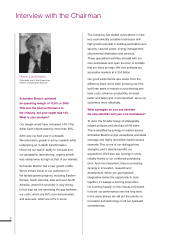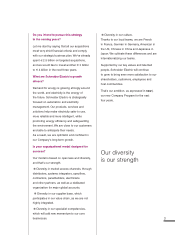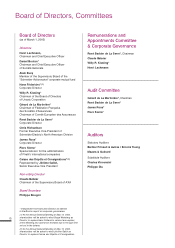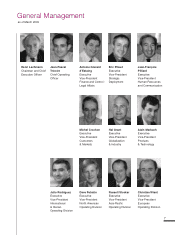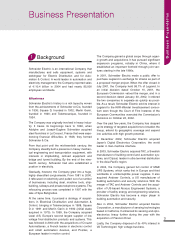APC 2004 Annual Report Download - page 11
Download and view the complete annual report
Please find page 11 of the 2004 APC annual report below. You can navigate through the pages in the report by either clicking on the pages listed below, or by using the keyword search tool below to find specific information within the annual report.
1
Business Presentation
9
Business Presentation
Background
Schneider Electric is an international Company that
manufactures and sells equipment, systems and
switchgear for Electric Distribution and for Auto-
mation & Control. A world leader in automation and
electricity management, the Company reported sales
of 10.4 billion in 2004 and had nearly 85,000
employees worldwide.
Milestones
Schneider Electric's history is a rich tapestry woven
from the achievements of Schneider et Cie, founded
in 1836; Square D, founded in 1902; Merlin Gerin,
founded in 1920; and Telemecanique, founded in
1924.
The Company was originally involved in heavy indus-
try. It traces its beginnings back to 1836, when
Adolphe and Joseph-Eugène Schneider acquired
steel foundries in Le Creusot, France that were expe-
riencing financial difficulties. In 1838, they formed
Schneider & Cie.
From that point until the mid-twentieth century, the
Company steadily built a presence in heavy mechan-
ical engineering and transportation equipment, with
interests in shipbuilding, railroad equipment and
bridge and tunnel building. By the end of the nine-
teenth century, Schneider had also established a
position in electricity.
Gradually, however, the Company grew into a huge,
highly diversified conglomerate. From 1981 to 2000,
it refocused on electricity and pulled out of a number
of businesses, including steel, machine tools, ship-
building, railways and private telephone systems.The
refocusing process was completed in 1997 with the
sale of Spie Batignolles.
At the same time, it pursued a strategy of acquisi-
tions in Electrical Distribution and Automation &
Control, bringing in Telemecanique in 1988, Square
D in 1991 and Merlin Gerin in 1992 (initial stake
acquired in 1975). In 1999, the Company acquired
Lexel A/S, Europe's second largest supplier of low
voltage final distribution products and systems. This
was followed in 2000 with the acquisitions of Crouzet
Automatismes, a French leader in electronic control
and small automation devices, and Positec, a
European leader in motion control.
The Company gained a global scope through organ-
ic growth and acquisitions. It has pursued significant
expansion programs, notably in China, where it
established an important foothold through joint ven-
tures starting in the late 1980s.
In 2001, Schneider Electric made a public offer to
purchase Legrand in exchange for shares as part of
a proposed merger project. When the offer closed in
July 2001, the Company held 98.1% of Legrand. In
an initial decision dated October 10, 2001, the
European Commission vetoed the merger, and in a
second decision dated January 30, 2002, it ordered
the two companies to separate as quickly as possi-
ble. As a result, Schneider Electric sold its interest in
Legrand to the KKR-Wendel Investissement consor-
tium even though the Court of First Instance of the
European Communities overruled the Commission's
decisions on October 22, 2002.
Over the past few years, the Company has stepped
up its strategy of targeted acquisitions to broaden the
lineup, extend its geographic coverage and expand
into activities with high growth potential.
In December 2002, Schneider Electric acquired
Japan's Digital Electronics Corporation, the world
leader in man-machine interface.
In 2003, Schneider Electric acquired TAC, a Swedish
manufacturer of building control and automation sys-
tems, and Clipsal, leader in ultra terminal distribution
in the Asia-Pacific region.
In 2004, the Company gained full control of MGE
UPS Systems, which ranks first in Europe and third
worldwide in uninterruptible power supplies. It also
acquired Andover Controls, a US manufacturer of
building automation and security solutions. With the
merger of TAC and Andover Controls and the acqui-
sition of US-based Abacus Engineered Systems, a
provider of facility energy and engineering solutions,
Schneider Electric has become a major player in
building automation and security.
Also in 2004, Schneider Electric acquired Kavlico
Corporation, a manufacturer of sensing technologies
based in California. It enhanced its sensing and opto-
electronics lineup further during the year with the
acquisition of France's Dinel.
Lastly, the Company disposed of its 40% interest in
VA Technologies' high voltage business.




